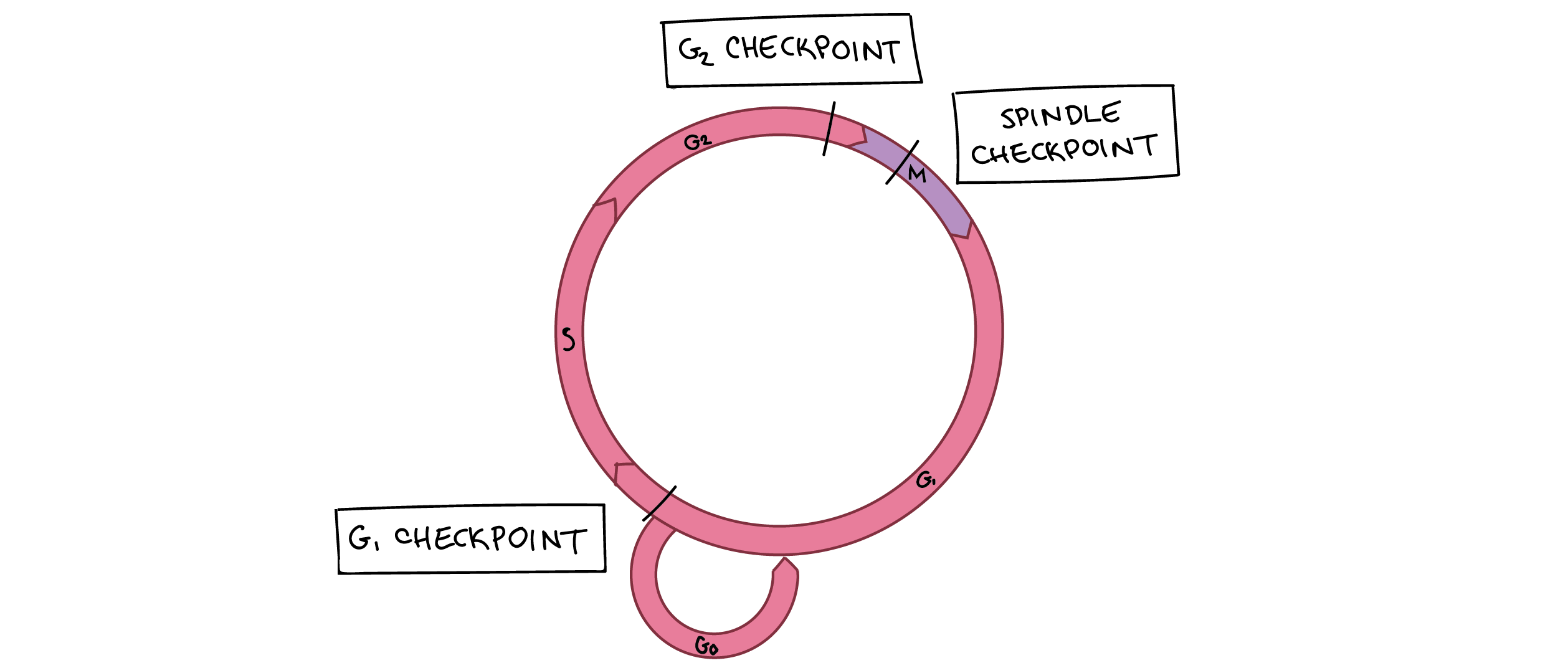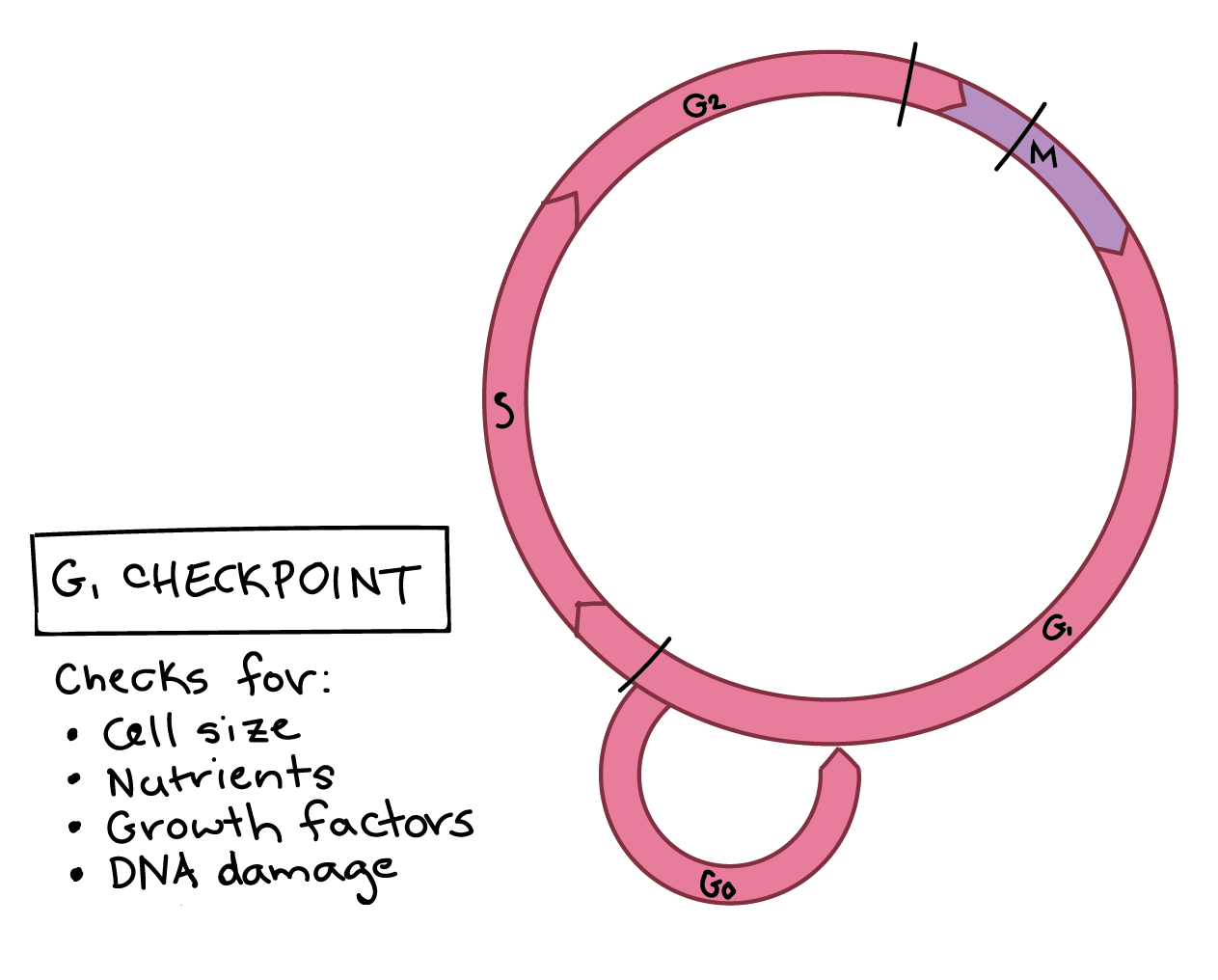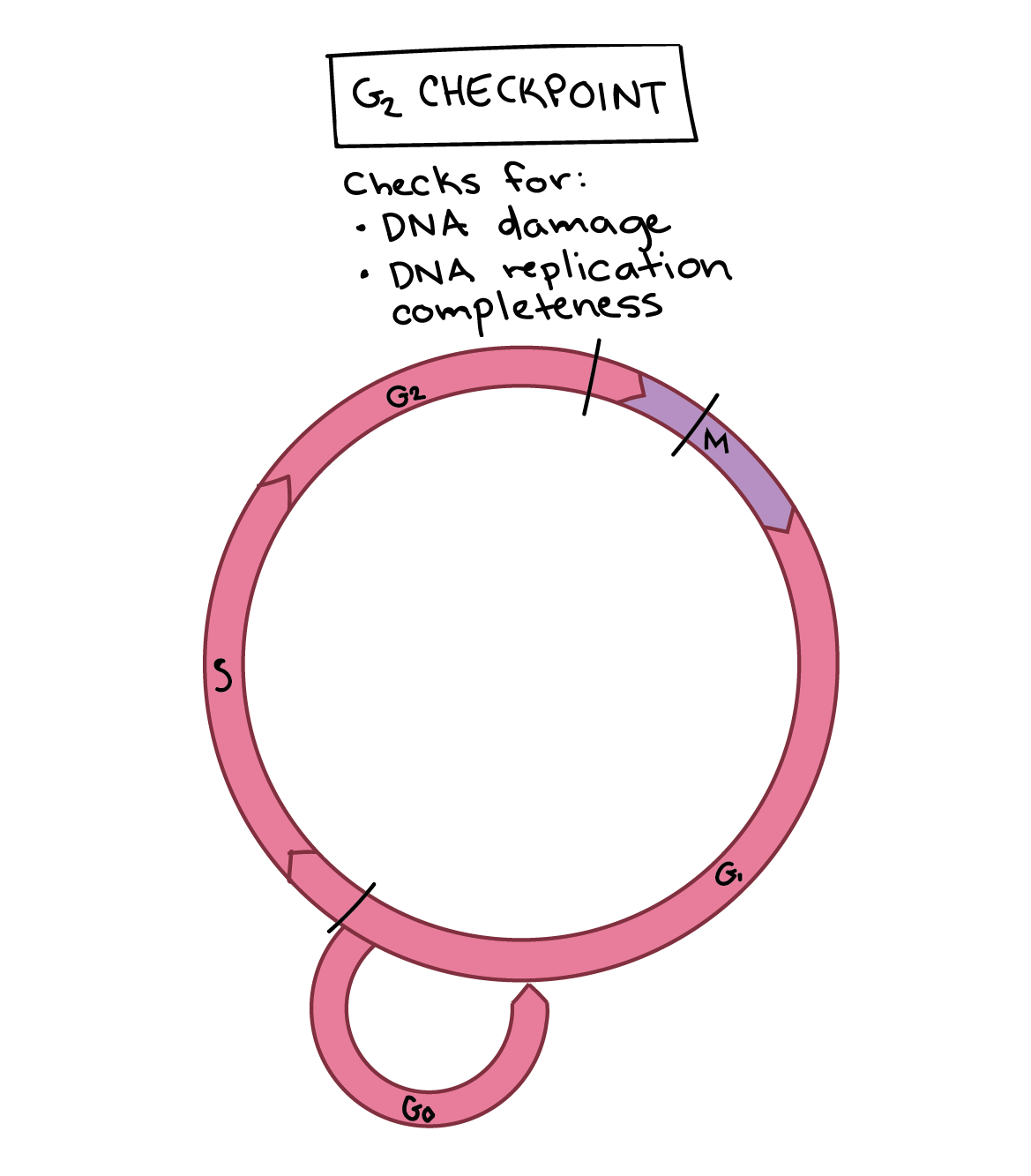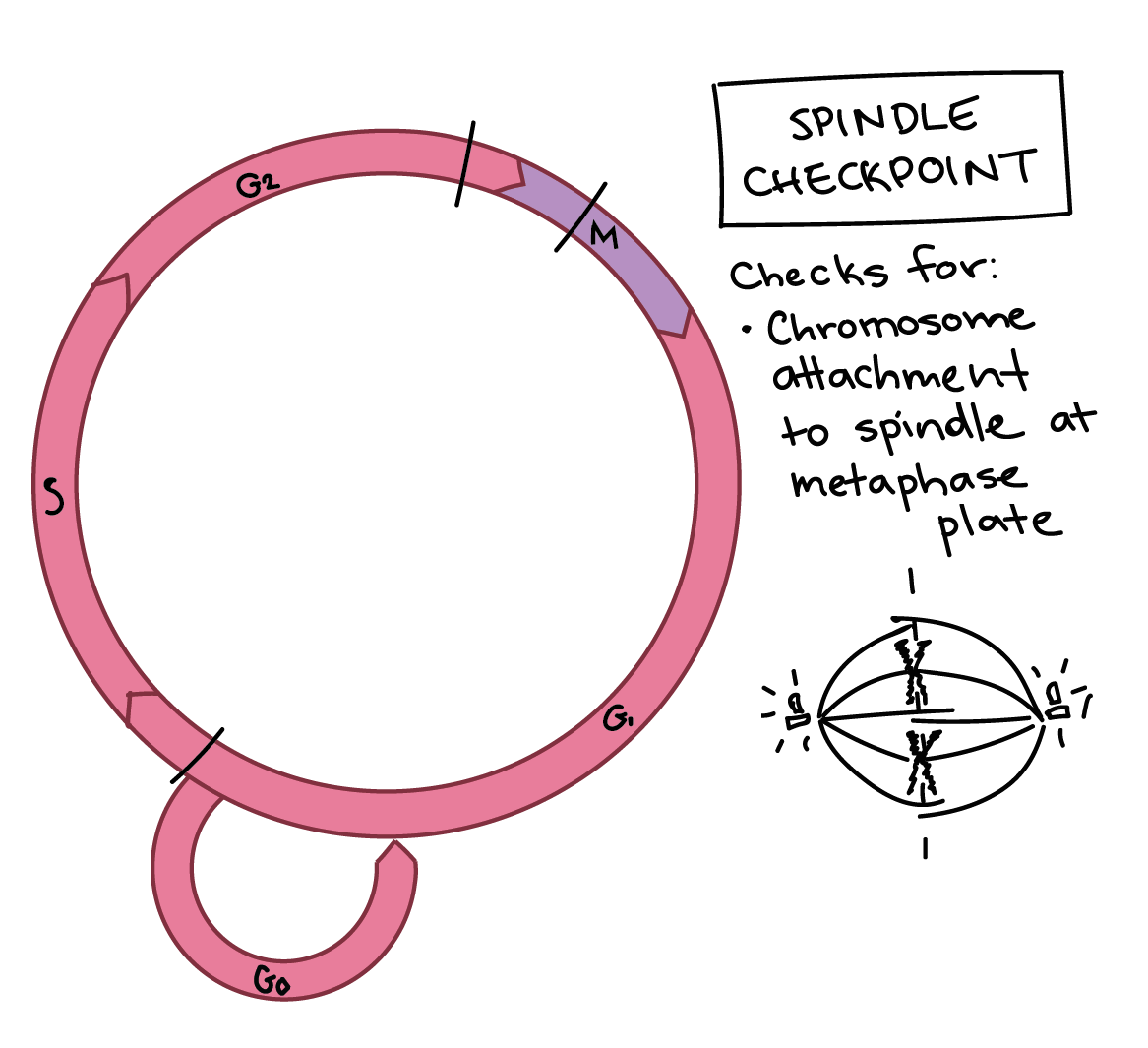Cell cycle checkpoints
How cells use checkpoints at the end of the G1 phase, end of the G2 phase, and partway through the M phase (the spindle checkpoint) to regulate the cell cycle.
• The spindle checkpoint, at the transition from metaphase to anaphase.
• Nutrients. Does the cell have enough energy reserves or available nutrients to divide?
• Molecular signals. Is the cell receiving positive cues (such as growth factors) from neighbors?
• DNA integrity. Is any of the DNA damaged?
Introduction
cells move through the cell cycle, do they breeze through from one phase to the next? If they're cancer cells, the answer might be yes. Normal cells, however, move through the cell cycle in a regulated way. They use information about their own internal state and cues from the environment around them to decide whether to proceed with cell division. This regulation makes sure that cells don't divide under unfavorable conditions (for instance, when their DNA is damaged, or when there isn't room for more cells in a tissue or organ).Cell cycle checkpoints
A checkpoint is a stage in the eukaryotic cell cycle at which the cell examines internal and external cues and "decides" whether or not to move forward with division.
There are a number of checkpoints, but the three most important ones are:
• The Gstart subscript, 1, end subscript checkpoint, at the Gstart subscript, 1, end subscript/S transition.
• The Gstart subscript, 2, end subscript checkpoint, at the Gstart subscript, 2, end subscript/M transition.
• The spindle checkpoint, at the transition from metaphase to anaphase.
The Gstart subscript, 1, end subscript checkpoint
The Gstart subscript, 1, end subscript checkpoint is the main decision point for a cell – that is, the primary point at which it must choose whether or not to divide. Once the cell passes the Gstart subscript, 1, end subscript checkpoint and enters S phase, it becomes irreversibly committed to division. That is, barring unexpected problems, such as DNA damage or replication errors, a cell that passes the Gstart subscript, 1, end subscript checkpoint will continue the rest of the way through the cell cycle and produce two daughter cells.
At the Gstart subscript, 1, end subscript checkpoint, a cell checks whether internal and external conditions are right for division. Here are some of the factors a cell might assess:
• Size. Is the cell large enough to divide?
• Nutrients. Does the cell have enough energy reserves or available nutrients to divide?
• Molecular signals. Is the cell receiving positive cues (such as growth factors) from neighbors?
• DNA integrity. Is any of the DNA damaged?
These are not the only factors that can affect progression through the Gstart subscript, 1, end subscript checkpoint, and which factors are most important depending on the type of cell. For instance, some cells also need mechanical cues (such as being attached to a supportive network called the extracellular matrix) in order to dividestart superscript, 1, end superscript.
If a cell doesn’t get the go-ahead cues it needs at the Gstart subscript, 1, end subscript checkpoint, it may leave the cell cycle and enter a resting state called Gstart subscript, 0, end subscript phase. Some cells stay permanently in Gstart subscript, 0, end subscript, while others resume dividing if conditions improve.
The Gstart subscript, 2, end subscript checkpoint
To make sure that cell division goes smoothly (produces healthy daughter cells with complete, undamaged DNA), the cell has an additional checkpoint before M phase, called the Gstart subscript, 2, end subscript checkpoint. At this stage, the cell will check:
• NA integrity. Is any of the DNA damaged?
• DNA replication. Was the DNA completely copied during S phase?
• DNA replication. Was the DNA completely copied during S phase?
If errors or damage are detected, the cell will pause at the Gstart subscript, 2, end subscript checkpoint to allow for repairs. If the checkpoint mechanisms detect problems with the DNA, the cell cycle is halted, and the cell attempts to either complete DNA replication or repair the damaged DNA.
If the damage is irreparable, the cell may undergo apoptosis, or programmed cell deathsquared. This self-destruction mechanism ensures that damaged DNA is not passed on to daughter cells and is important in preventing cancer.
The spindle checkpoint
The M checkpoint is also known as the spindle checkpoint: here, the cell examines whether all the sister chromatids are correctly attached to the spindle microtubules. Because the separation of the sister chromatids during anaphase is an irreversible step, the cycle will not proceed until all the chromosomes are firmly attached to at least two spindle fibers from opposite poles of the cell.
How does this checkpoint work? It seems that cells don't actually scan the metaphase plate to confirm that all of the chromosomes are there. Instead, they look for "straggler" chromosomes that are in the wrong place (e.g., floating around in the cytoplasm)cubed. If a chromosome is misplaced, the cell will pause mitosis, allowing time for the spindle to capture the stray chromosome.
How do the checkpoints actually work?
This article gives a high-level overview of cell cycle control, outlining the factors that influence a cell’s decision to pause or progress at each checkpoint. However, you may be wondering what these factors actually do to the cell, or change inside of it, to cause (or block) progression from one phase of the cell cycle to the next.
© All Rights Reserved. Designed and Developed by Anmol Verma
Tags:
Biology



